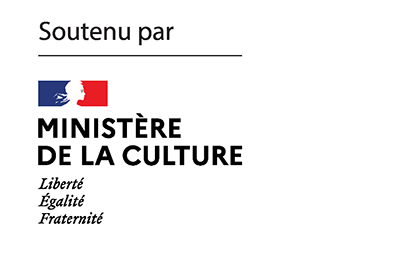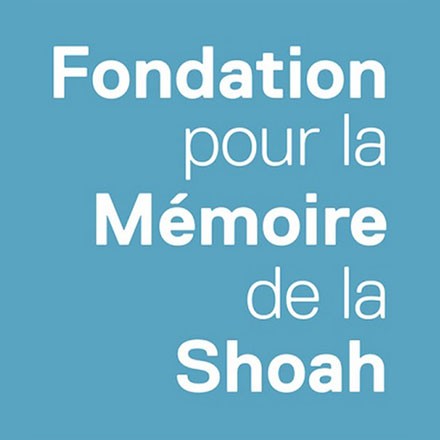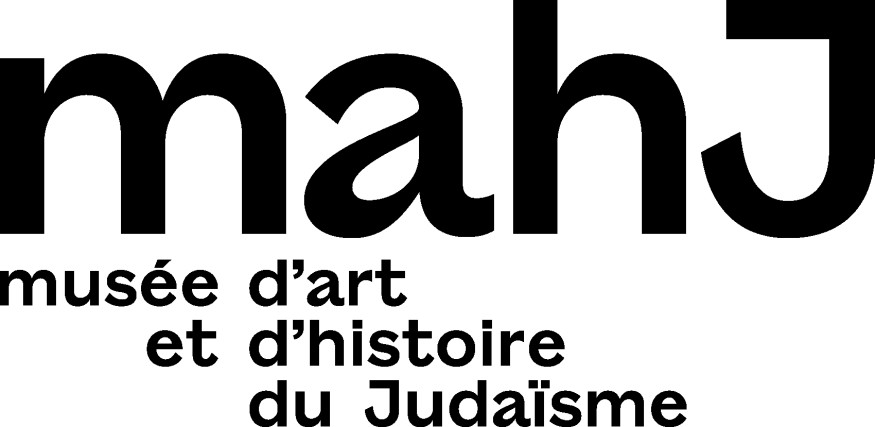No, Mandelbaum was not a nice Jewish boy. An artist, criminal and provocateur who lived and died on the fringes. Mitchell Abidor traces the journey of the Belgian-Jewish artist Stéphane Mandelbaum, who fused his Jewish identity, dyslexia, and obsession with both outcasts and perpetrators, with his inspirations from Francis Bacon to Pierre Goldman and Pier Paolo Pasolini into creations that challenge and unsettle.
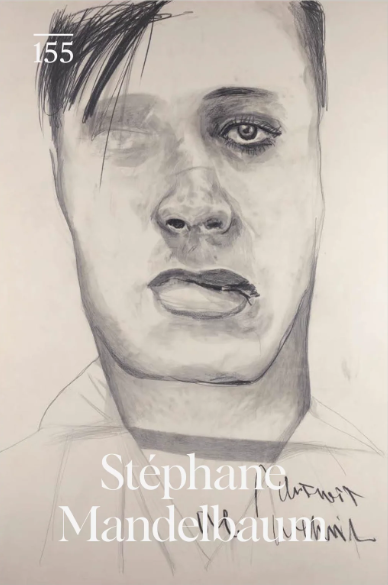
A revelatory exhibition at the Drawing Center in New York of the works of the Belgian-Jewish artist Stéphane Mandelbaum has allowed Americans to get a first glimpse of the work of a brilliant and fertile body of work. Though the show has no title other than the artist’s name, there is a work on display, or rather the text included in one of the drawings, a portrait of the artist’s father Arié, that would be an apt title for the entire show. It reads, in Yiddish characters, “Kush mir in tukhis.” This simple and direct command, to kiss his ass, expresses the attitude that animates the work of Mandelbaum who, over the course of his short life – he was murdered in 1986 when he was twenty-five – though brazenly Jewish, refused to be a good Jewish boy. His murder was almost the natural capstone to a life lived on the edge. After a period in which he was involved in various petty crimes, Mandelbaum had been involved in a plot to steal a Modigliani painting. The painting, though, turned out to be a forgery, and when he insisted on being paid for his part in the plot nonetheless, the leader of the ring of art thieves he’d worked with had him shot and killed, had acid poured on his face, and left his body in a vacant lot. No, Mandelbaum was not a nice Jewish boy.
That lack of niceness in the life he lived and depicted and the influences that shaped him can be traced to his Jewishness which, no matter the ostensible subject, inhabits his art. Whether it’s a portrait of his artist father, son of a pre-war immigrant from Poland who worked as a miner, or of his fellow denizens of bars and hangouts in Brussels, or of people he admired, like Francis Bacon and Pier Paolo Pasolini, it’s the ineluctable outsiderness as a Jew that he embraced that we are given to see. It’s not surprising that he was an admirer of Pierre Goldman, the “Polish Jew born in France” whose murder trial and memoir were major components of Mandelbaum’s mental world. Goldman’s political and ethical defiance receive their artistic expression in Mandelbaum’s pencil-drawn portraits. Goldman’s rage against his fate, which saw him born too late to fight the Nazis like his parents, who were in the Communist Resistance and against a world in which he could only be a foreigner no matter where he was, also motivated Mandelbaum. One almost has to wonder if many of Mandelbaum’s life choices weren’t consciously modeled on Goldman’s. When Mandelbaum’s art failed to bring in enough income for him to survive, he, like Goldman, turned to a life of crime. Both men married Black women, Goldman’s wife from Guadeloupe, Mandelbaum’s from the Congo. It was as if neither man could find enough ways to stand outside the surrounding society.
Mandelbaum’s Jewishness was something he chose. His mother was an Armenian Christian, so unlike Goldman he was not, halakhically, a Jew. But the influence of his father Arié and his grandfather Szulim, both of whom he loved and admired, led him to throw himself into Jewishness. It is interesting that Mandelbaum had a choice of heritages, both of which involved genocide. He chose the one that his name clearly signified and that, because it was not Christian, solidified his outsiderness.
His drawings are sprinkled with pasted-on images, often pornographic, as well as text written in French or Yiddish or a combination of the two. In doing so Mandelbaum insisted on rubbing his Jewishness in the face of his viewers. Doing so required some effort: Mandelbaum was dyslexic and had been forced to attend special schools. Until the end, even in French his spellings and conjugations included in his drawings were full of errors we can attribute to his dyslexia. Learning Yiddish, which he set out to do as a teenager, was thus an especial challenge for him. But again, entry into the world of a language written in a different alphabet and read right-to-left rather than left-to-right added further apartness to his being. Mandelbaum even attempted to teach his adopted Congolese daughter Yiddish, the source perhaps of the list of Yiddish words we see in his 1984 drawing “Composition à la figure rouge.” It is likely his dyslexia that explains the title of the above mentioned portrait of his father. The title is given as “Kismatiores!” In no language is this the transliteration of what the painting actually says, “Kush mir in tukhis,” but it’s possible that in Mandelbaum’s dyslexic confusion this is how it should be spoken in French.
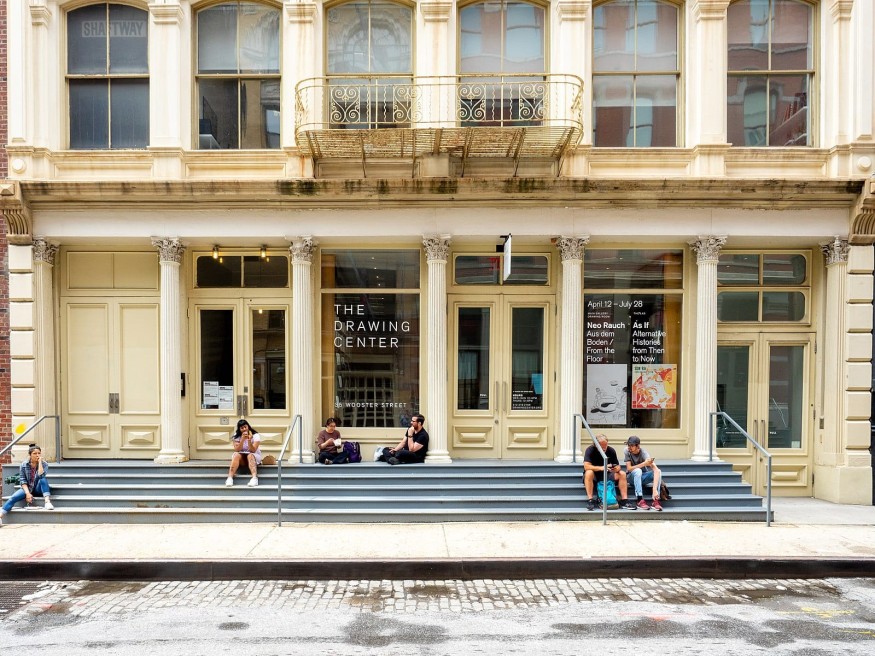
Despite his embrace of otherness, there does seem to be a world in which Mandelbaum was comfortable: that of the louche bars and clubs of Brussels. A significant part of his oeuvre were drawings of individuals he encountered during his night prowls that were larger than life, even heroic. This was a ready-made world in which he inserted himself, one made up of hustlers, crooks, and prostitutes. But there was also an imaginative world that we find in his drawings, populated by a cast that is at times singularly perverse. These drawings are his most provocative, as they are portraits of figures whose evil deeds formed his view of the world. Alongside acceptable rebels like Rimbaud and Luis Buñuel, we find Nazis like SA leader Ernst Röhm, killed on The Night of the Long Knives, and Joseph Goebbels. Others of his works are sprinkled with references to concentration camps, to Nazis and Nazi symbols. Mandelbaum, the Jew, exists because his family survived them, but their presence still lurks over his past.
Mandelbaum did not shy away from pornography, and there exists a notebook of nothing but his pornographic drawings. But pornography, even drawn by the artist or cut out of magazines, appears with some regularity in Mandelbaum’s work. It can, as we’ve seen, exist in a portrait of his father. But in one of his works a drawing of a woman performing fellatio appears next to a drawing of the entrance to Auschwitz: two of Mandelbaum’s obsessions, sex and the massacre of European Jewry, are incongruously paired. As Laura Hoptman wrote in an essay about Mandelbaum, “Mandelbaum’s large-scale drawings of Goebbels and Rohm, Szulim and Arié Mandelbaum, and Pierre Goldman can all be considered part of the artist’s aim to appropriate and weaponize images of Nazi perpetrators and the Jews who stood up to their threats of annihilation.”
The artist who most influenced Mandelbaum in every regard is unquestionably Francis Bacon. He drew portraits of the English artist, but also of his lover and companion, the thief George Dyer. Bacon’s use of the faces and figures of his friends and acquaintances is echoed in the work of Mandelbaum. Bacon was not just an inspiration or an undercurrent, as a visit to the New York show reveals. Bacon, a gay artist who was enormously successful yet still an outsider, figures in many of Mandelbaum’s portraits, in a unique fashion. Included in the New York show were a series of portraits of the Italian filmmaker, novelist, and poet Pier Paolo Pasolini. As a rebel against all forms of orthodoxy, Pasolini was a fitting choice for Mandelbaum. Gay and a dissident communist who preferred the police to the rioting students of 1968, Pasolini chose at all times to follow his own path. That his path foreshadowed Mandelbaum’s is a striking irony of fortune: like Mandelbaum, Pasolini’s murdered body was found in an empty field, his own predilections, like Mandelbaum’s, tragically leading him to this end. It was only natural that Mandelbaum, in 1978, when he was only seventeen, should travel to the beach in Ostia where Pasolini was killed to spend the night. But the portraits of Pasolini barely resemble the handsome Italian. Something is seriously off in them, and a look around the room that contained them tells us why: Pasolini, like most of Mandelbaum’s other subjects, have Francis Bacon’s distinctive bulbous nose. Goebbels, Röhm, Goldman, people familiar and not, as long as Mandelbaum feels strongly about them, they bear the sign of outlawry: Bacon’s nose.
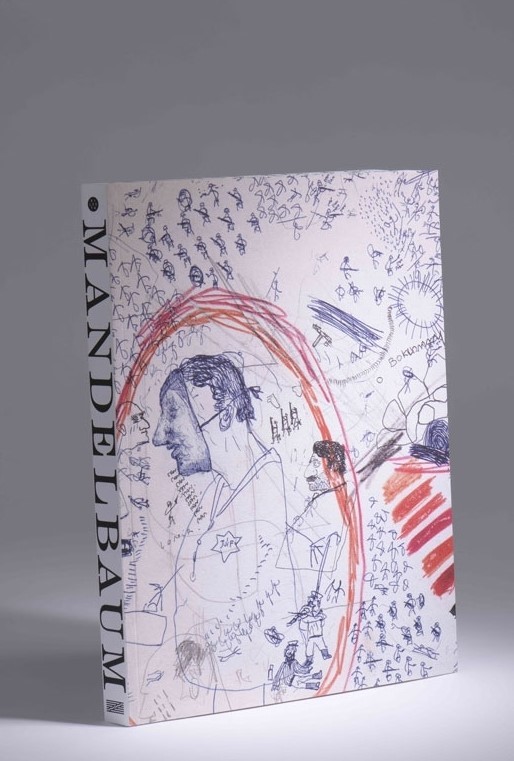
All this richness, historical, artistic, and personal, was executed by Mandelbaum for the most part using the most limited means: his drawings were done for the most part on cheap paper with graphite pencil and occasionally ballpoint pen. These simple tools give his work a stunning immediacy. They are snapshots of a soul. The paper he drew on was cheap as well, barely a step above butcher paper, when it wasn’t simple notebook paper. Even the most seemingly offhand of his works carry an enormous weight, that of a European Jew living after the Holocaust. In a letter to a friend Mandelbaum wrote: “I love the dead, who enable me to work.” Numbered among the dead were the artists he admired, but above all, they were the Jews who died in the mass slaughter that occurred two generations before his birth. To again quote Laura Hoptman, “Mandelbaum’s oeuvre represents one of a very few credible attempts to create a contemporary art that wrestles with the history of the Holocaust.”
Several paintings have survived, and along with Nazi-themed works, there is an especially disturbing self portrait painted in 1976 by the teenage Mandelbaum. It shows the young painter standing facing the viewer. Behind him are a series of hooks like those used in slaughterhouses, perhaps a reference to Bacon’s use of slaughtered animals in his paintings. Mandelbaum is facing us, his hands at his crotch, his penis exposed, with blood pouring from around it. He had made a gift of the painting to a neighbor, who found it so disturbing that he kept it hidden in his attic. Mandelbaum might have understood this reaction. As he wrote in a letter to this same neighbor: “I’m disgusted by what I create, but I also respect it. It empties my whole body, like when I ejaculate.”
Mitchell Abidor



